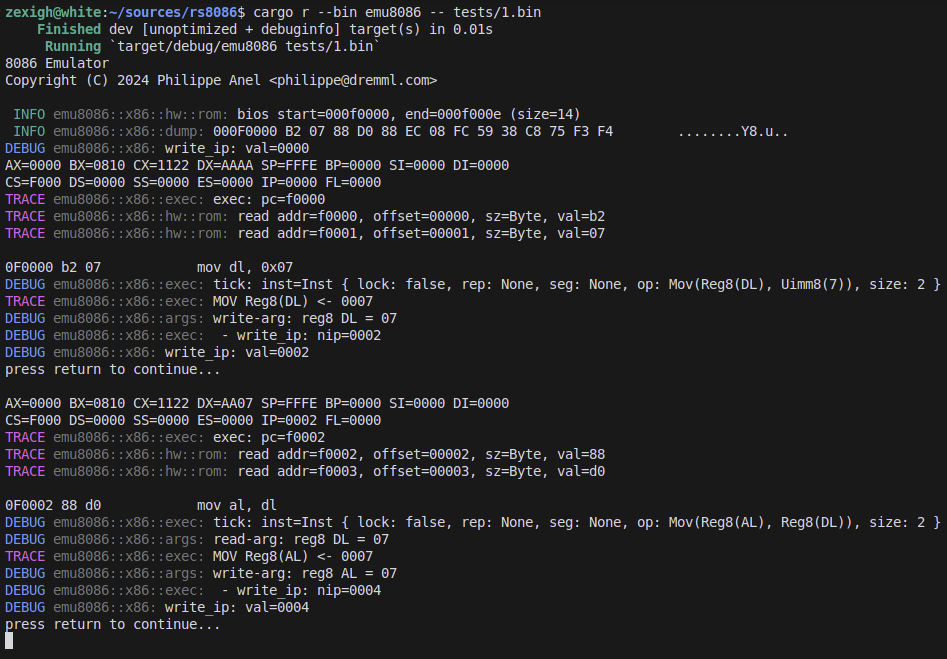!!! WIP !!! (not fully working) ... I'll keep working on it until it's fully working, and then I'll remove this disclaimer.
I started this project because I was curious how the 8086/80186/80286 cpus worked, and I wanted to see how far I could get with emulating it in Rust.
It does not rely on any external libraries, all the logic is implemented in Rust (except for tracing functions of course).
It is expected to come with a lot of bugs at the beginning. If you want to contribute, please do so, but keep in mind that I'll work on it everyday it will change a lot even if it will take some time to reach a stable state.
At the moment it is only able to execute some instructions ...
I plan to add :
-
add a GUI (both desktop and web)
-
add a debugger
-
add a disassembler
-
add an assembler
-
add support for the 8087 FPU
-
add support for the 80186/80286/80386/80486 ???
-
add emulation of the 8086 BIOS and XT hardware, until it can run DOS programs
-
make it work on Raspberry Pi Pico (2 with RP2350/RISC-V) boards
This project is licensed under the MIT license. Do whatever you want with it, but keep in mind that it may contain bugs.
See LICENSE file.
For the moment, you'll require NASM to assemble the file.
nasm -f bin -o tests/1.bin tests/1.asm
Of course you'll need Rust to build the project. I'll add release binaries as soon as it gets to a stable state.
cargo run --bin=emu8086 -- <rom-file.bin>
With the following assembly code :
CPU 8086
BITS 16
ORG 0 ; !!! hey: in fact, we start at 0xf000:0x0000
%include "./expect.inc"
_start:
STC
HLT
EXPECT CF, 1Where EXPECT is a macro from ./expect.inc that adds data to the test file, and the emulator will check that the condition(s) is true at the end of the program.
Here it only tests the CF flag (carry flag), which is set by the STC instruction.

